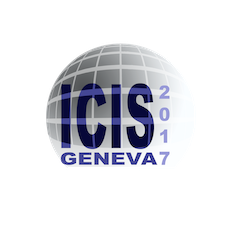Conveners
6th Session: Tuesday PM1
- Friedhelm Ames (TRIUMF)
An Electron Beam Ion Source Charge Breeder (EBIS-CB) has been developed at Argonne National Laboratory as part of the CAlifornium Rare Ion Breeder Upgrade (CARIBU). For the past year, the EBIS has been undergoing commissioning as part of the ATLAS accelerator complex. It has delivered both stable and radioactive beams with A/Q < 6, breeding times < 30 ms, low background contamination, and...
The classic sheath model for unmagnetized positive ion extraction codes was developed in the seventies. It assumes that the extracted ions originate from a positive plasma potential and experience a monotonic acceleration through the plasma sheath towards the extraction at negative potential. The model assumes that the compensating electron density can be stated as an analytic function of the...
The ITER Neutral Beam Injection (NBI) relies on sources of negative hydrogen and deuterium ions which deliver a homogeneous and temporally stable extracted negative hydrogen ion beam for up to one hour (57 A extracted D$^–$ current from an extraction area of 2000 cm$^2$), at which the co-extracted electron current has to be lower than the extracted negative ion current. The large ELISE...
The Neutral Beam (NB) system for ITER will deliver an ion beam with energy of 1 MeV and current of 40 A. Only NB systems based on negative ions can attain the neutralization efficiency required for the NB system in ITER. Helicon plasmas are a promising candidate for the production of negative ions. The RAID (Resonant Antenna Ion Device) at the Swiss Plasma Center represents a crucial step in...
This work represents a detailed numerical simulation of the ITER-prototype negative ion source. The numerical model is based on Particle-in-Cell / Monte Carlo Collision (PIC-MCC) methodology to study production, transport and extraction of all charged particles (electron, positive and negative ions) in a self-consistent electric field (magnetostatic approximation). The effect of grid biasing...
